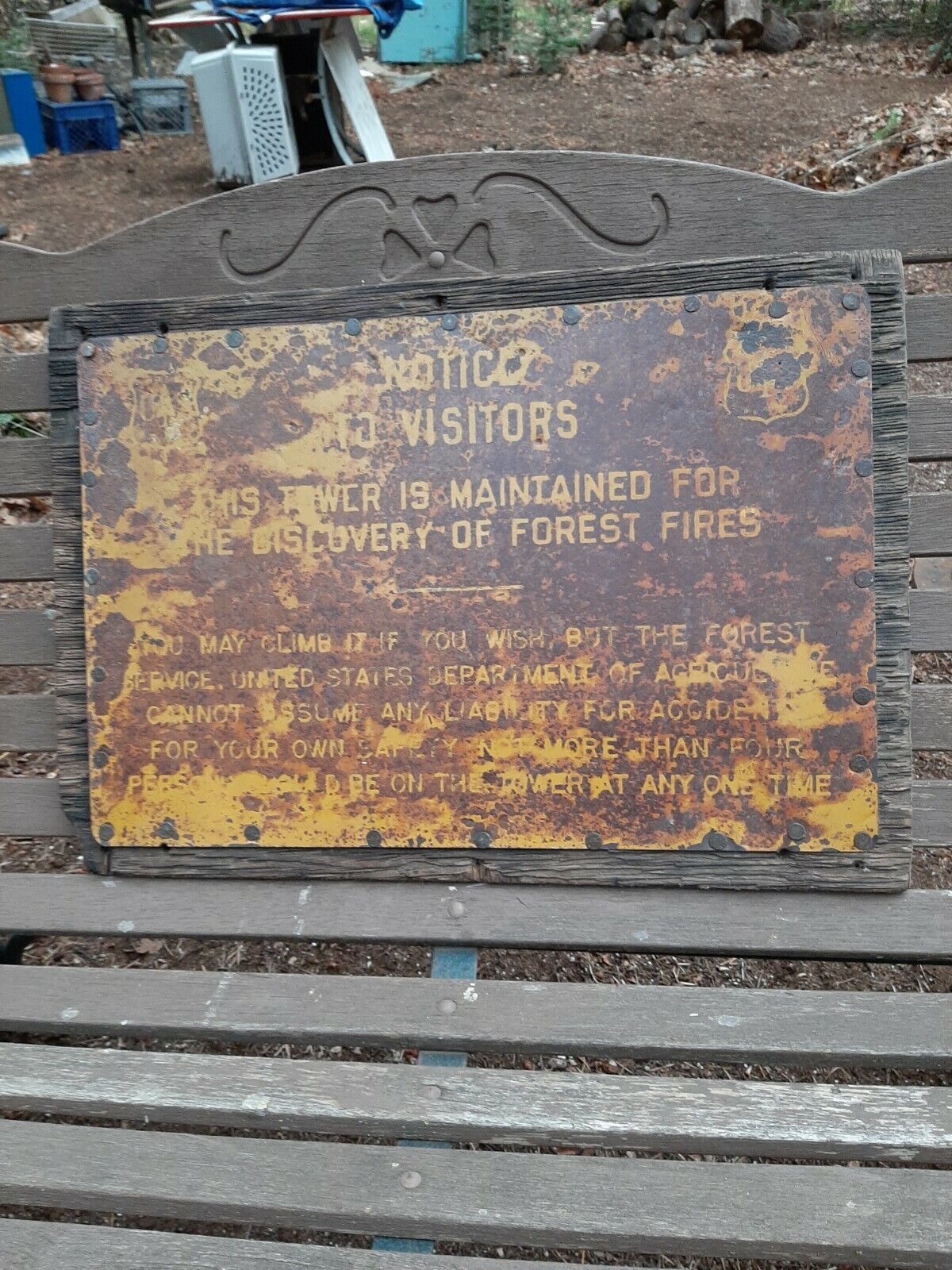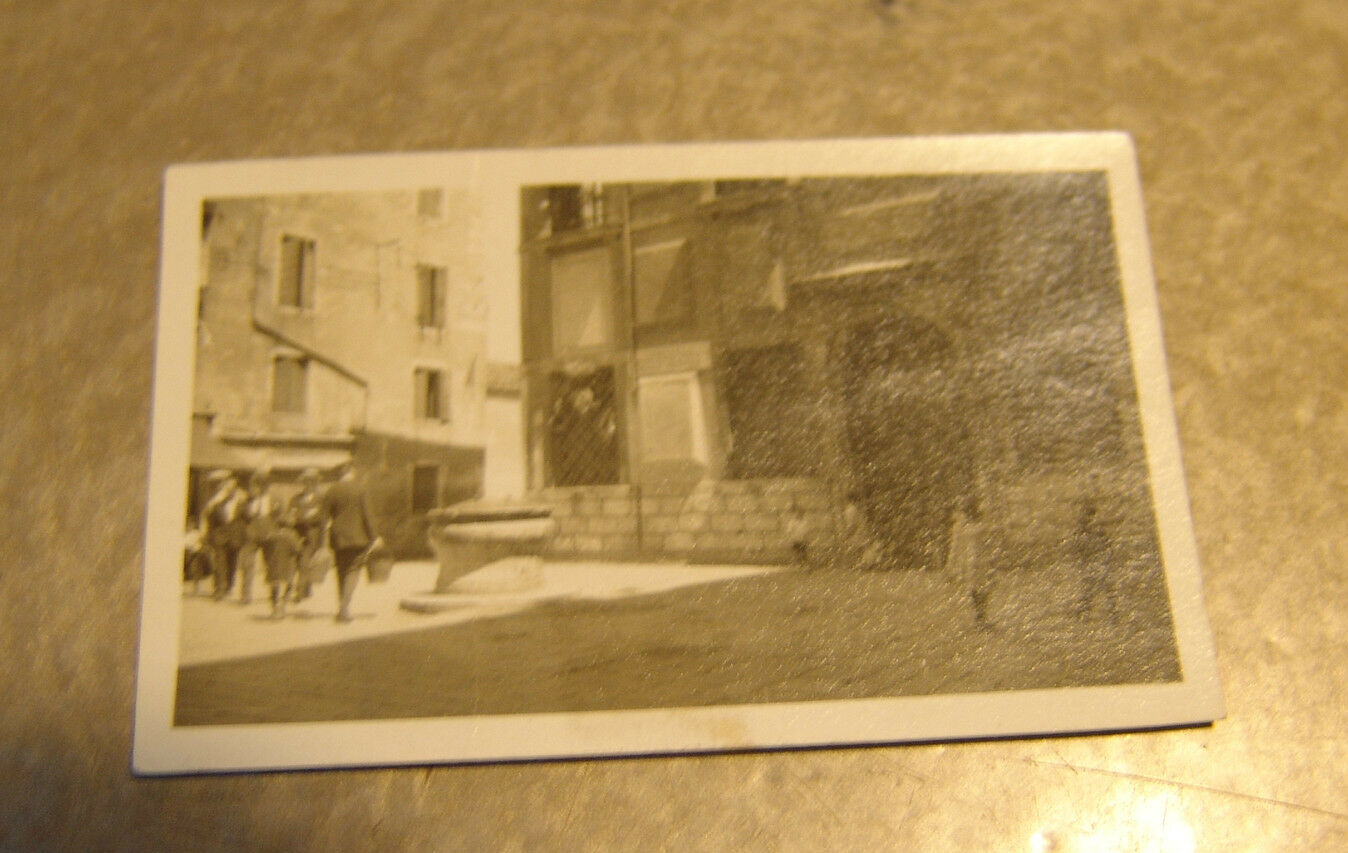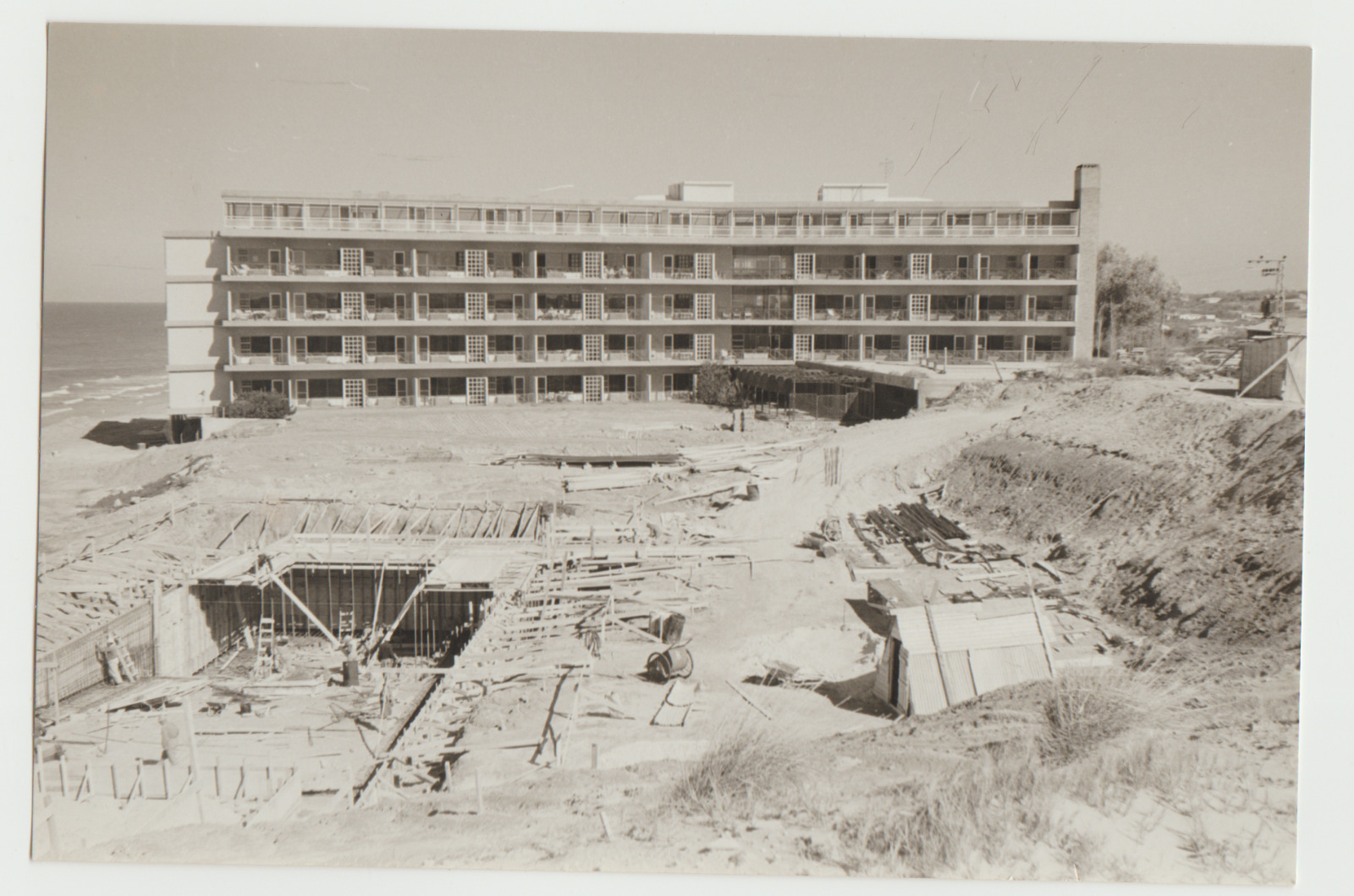-40%
1955 JEWISH Poster ART POSTCARD Israel DEFENSE Shamir TANK Judaica IDF Hebrew
$ 34.32
- Description
- Size Guide
Description
DESCRIPTION:
Here for sale is a VERY RARE beautifuly 55 years old illustrated IMPRESSIVE ERETZ ISRAEL poster POSTCARD . It was printed and circulated in 1956 ( Fully dated ) , Only 8 years after the BIRTH of the INDEPENDENT STATE of ISRAEL and its 1948 WAR of INDEPENDENCE. The Jewish Judaica Israeli POSTCARD was sent to Israeli citizens by the Eretz Israeli DEFENSE FUND , Urging them to donate funds for the DEFENSE of ERETZ ISRAEL. The GRAPHIC DESIGN , Depicting a TANK over a barbed wire fence , Was created by the renowned SHAMIR BROTHERS ( Signed in the print ) . The main HEBREW TEXT is somewhat poetic and definitely bombastic " THERE'S NO TIME LEFT - DONATE YOUR FULL SHARE to the DEFENSE FUND" . On verso there's a quite detailed explanation regarding the sums which are requiered and the national important goals of the DEFENSE FUND
. Postcard-poster size 6 x 4". Excellent condition. ( Pls look at scan for accurate AS IS images ) Postcard will be sent inside a protective packaging .
PAYMENTS
:
P
ayment method accepted : Paypal
& All credit cards
.
SHIPPMENT
:
Shipp worldwide via registered airmail is $
19
.
Postcard will be sent inside a protective packaging
.
Will be sent around 5-10 days after payment .
Gabriel Shamir (b. Guttel Sheftelowitz, Libau, Latvia, 1909; d. Israel, 1992) and Maxim Shamir (b. Maxim Sheftelowitz, Libau, Latvia, 1910; d. Israel, 1990), were Israeli graphic designers. Both of the Shamir brothers studied graphics and design at the Kunstgewerbeschule of Charlottenburg in Berlin Germany—Gabriel in 1926-30 and Maxim in 1928-33. 1930-31, Gabriel worked for advertising agency Lintas in Berlin and, 1931-33, for advertising agency Gumaelius in Stockholm. In 1934, they opened a graphic-design studio in Riga, Latvia, but the next year immigrated to Eretz Israel (or Land of Israel as the pre-state in Palestine was known to the Jews). The brothers arrived during the fifth wave of immigration and very soon set up the Shamir Brothers Studio at Sderot Rothschild 84 in Tel Aviv. The time was a lively and somewhat prosperous period, when the port of Tel Aviv was built (1936), the Levant Fairs were inaugurated (1932, 1934, 1936), and the first Maccabiah Games were held (1932, 1935). These and other advents created a propitious climate for those like the trained and experienced Shamirs who could create effective propaganda and advertising material, such as posters. These early years in Eretz Israel of the development of promotion and persuasion by professionals lead to the 1935 establishment of the Department of Graphics at the Bezalel Academy of Art and Design and The Society of Hebrew Graphic Artists in Eretz Israel of which the Shamirs were two of the cofounders. Because there were few Hebrew typefaces available, the Shamirs and others improvised hand-painted Hebrew letters, often into transliterated words from European languages and English. Eventually, a number of faces became available even though some were Europeanized into Hebrew letterforms that called on sans-serif fonts such as 1925 Universal by Herbert Bayer (re-formed by Jan Tischold in 1926) and 1928 Futura by Paul Renner. Whereas Franz Kraus, the Austrian graphic designer who arrived in Eretz Israel a year before the Shamirs, adhered to a uniform type style, the brothers sought typography that they felt expressed the subject matter. The story of the Shamir brothers, whose images of people were infused with an optimistic, even joyous, attitude in numerous examples, is also the story of Israel's formative years. They were empathetic partners with those enthusiastic about the future of the formation of an official State of Israel, and the Shamirs assisted the quest by visually fostering the citizens' sense of a national unity. The brothers undertook to formalize and actualize the visual symbols of Israeli sovereignty and independence. Hence, they designed the state's emblems, medals, stamps, and currency notes, including the 1949 Israeli State Coat of Arms (an image of a menorah and olive branches). In addition, they advertised cigarettes and other consumer goods, as well as designed stamps for countries in Africa, Asia, and South America. Their posters, other advertisements, and logos from 1935 to the close of their studio in 1974—rendered for the lottery, marketing fairs, land settlement, support of the army, food rationing, anti-black-market drives, and other nationalistic efforts—express a hyped communist attitude, but not extreme or dour as in the propaganda of Bolshevik Russia. Even so, most Shamir work promoting nationalistic causes possessed a strong Israeliness and an heroic dimension which are absent in the country today. The Shamir brothers are two of Israel's most-prominent graphic designers; the others include Franz Kraus (1905–98), Dan Reisinger (b. 1934) and David Tartakover (b. 1944).
Exhibition
“Shamir: Hebrew Graphics, Shamir Brothers Studio,” Tel Aviv Museum of Art, Tel Aviv, Israel, 1999
References
Shamir, Maxim and Gabriel (1969).
The Story of Israel in Stamps
, New York: Sabra Books; Funk & Wagnalls. Shamir, Maxim and Gabriel (1969 and 1972).
Die Geschichte Israels in Briefmarken
, New York: Sabra Books; Tel Aviv: Hakesher. Exhibition catalog, Donner, Batia,
et al.
(1999).
Shamir: Hebrew Graphics, Shamir Brothers Studio
, Tel Aviv: Tel Aviv Museum of Art The Israel Defense Forces (IDF; Hebrew:
צְבָא הַהֲגָנָה לְיִשְׂרָאֵ
Tzva Hahagana LeYisra'el
"The Army of Defense for Israel"; Arabic:
جيش الدفاع الإسرائيلي
Jaysh ad-Difāʻ al-Isrāʼīlī
), commonly known in Israel by the Hebrew acronym
Tzahal
(
צה"ל
), are the military forces of the State of Israel. They consist of the ground forces, air force, and navy. It is the sole military wing of the Israeli security forces, and has no civilian jurisdiction within Israel. The IDF is headed by its Chief of General Staff, the
Ramatkal
, subordinate to the Defense Minister of Israel; Rav Aluf Benny Gantz has served as Chief of Staff since 2011. An order from Defense Minister David Ben-Gurion on 26 May 1948, officially set up the Israel Defense Forces as a conscript army formed out of the paramilitary group Haganah, incorporating the militant groups Irgun and Lehi. The IDF served as Israel's armed forces in all the country's major military operations—including the 1948 War of Independence, 1951–1956 Retribution operations, 1956 Sinai War, 1964–1967 War over Water, 1967 Six-Day War, 1967–1970 War of Attrition, 1968 Battle of Karameh, 1973 Operation Spring of Youth, 1973 Yom Kippur War, 1976 Operation Entebbe, 1978 Operation Litani 1982 Lebanon War 1982–2000 South Lebanon conflict, 1987–1993 First Intifada, 2000–2005 Second Intifada, 2002 Operation Defensive Shield, 2006 Lebanon War, 2008–2009 Gaza War, 2012 Operation Pillar of Defense, and others. The number of wars and border conflicts in which IDF was involved in its short history, makes it one of the most battle-trained armed forces in the world. While originally the IDF operated on three fronts—against Lebanon and Syria in the north, Jordan and Iraq in the east, and Egypt in the south—after the 1979 Egyptian–Israeli Peace Treaty, it has concentrated its activities in southern Lebanon and the Palestinian Territories, including the First and the Second Intifada. The Israel Defense Forces differs from most armed forces in the world in many ways. Differences include the conscription of women and its structure, which emphasizes close relations between the army, navy, and air force. Since its founding, the IDF has been specifically designed to match Israel's unique security situation. The IDF is one of Israeli society's most prominent institutions, influencing the country's economy, culture and political scene. In 1965, the Israel Defense Forces was awarded the Israel Prize for its contribution to education.The IDF uses several technologies developed in Israel, many of them made specifically to match the IDF's needs, such as the Merkava main battle tank, high tech weapons systems, the Iron Dome, Trophy countermeasure, and the Galil and Tavor assault rifles. The Uzi submachine gun was invented in Israel and used by the IDF until December 2003, ending a service that began in 1954. Following 1967, the IDF has had close military relations with the United States, including development cooperation, such as on the F-15I jet, THEL laser defense system, and the Arrow missile defense system. ebay84



















